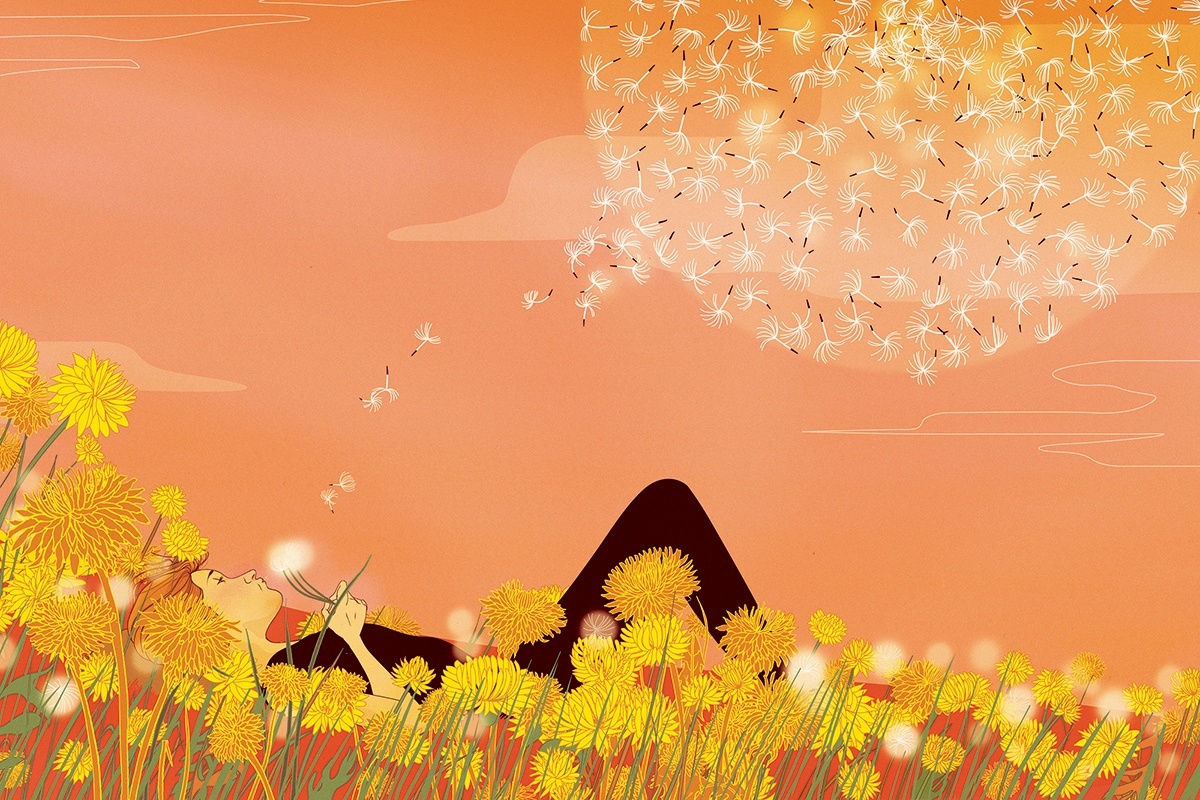I recently spotted a bright yellow dandelion blooming staunchly in my far-from-photo-worthy lawn, and I had to smile.
I realize most adults see dandelions as just weeds, unsightly and unwanted—potholes on the road to an admirable lawn. I first confirmed this belief when my now-grown children were little and our next-door neighbor, Harry, patrolled his yard with a sharp eye and an even sharper spade to remove dandelions that violated his carefully tended grass. Sometimes he came after the dandelions in my yard, too, and eradicated them before they blew up like tiny bombs whose feathery shrapnel spread offspring without regard for property lines.
But my toddlers showed me a different approach to dandelions. To them, these blooming weeds represented not an unkempt yard but a wonderland of shimmering orbs waiting for a puff of breath to give them flight. They loved to pick those fragile formations, hold them up and blow with all their might. I don’t know where they learned to do that. Maybe I or someone else showed them how, or maybe it’s just obvious to any child. At any rate, they didn’t need prompting from me. In fact, my son blew hopefully at every flower he encountered for years, apparently hoping the petals would float away like dandelion seeds.
I must defend that spade-wielding neighbor by noting that he adored my children and went out of his way to share the wonders of nature with them: baby birds in his birdhouse, squash flowers from his garden, tiny green figs hardly larger than the stem that held them. But he frowned at the sight of those snowy dandelion seeds blowing on the wind. To him, that sight only represented more backbreaking work.
In those days, dandelions made me realize how children see things with eyes still fresh and easily amazed. They taught me that a bane of adult existence can be a charm of childhood. They reminded me to take another look at the world.
Pecan trees did something similar.
Several large ones shaded our first neighborhood, and, even though everyone enjoyed the shade and tasty pecans, the adults were definitely not fond of raking the leaves every fall. But my kids, along with their cousins and friends, didn’t see hours of hard work, blistered hands and sore backs. To them, a pile of leaves offered an inviting playground, a fort or any number of places their imaginations could take them. They ran full-speed to fling themselves into the pile, grabbing handfuls to toss into the air and all over each other. They burrowed in, hiding in the caves they created. All this fun ultimately spread the leaves around again, and that meant more work for the grown-ups. But who could complain about that?
I remember being struck by the way small, everyday things widen babies’ eyes and bring smiles to their faces. Leaves blowing in the wind. Clouds. Stars. Flocks of ugly (to me) grackles. Birthday candles. When we get older, it takes so much more to get a response: comets, flocks of flamingoes, fireworks.
Why do we lose the thrill of the ordinary, and when does it happen? Surely we don’t choose to become jaded. The process must be so slow that no one notices until it’s too late. We turn around one day and there we are: real adults, hardened and skeptical.
Alison Gopnik and Tom Griffiths, professors of psychology at the University of California, Berkeley, study early development in animals and humans. They find that, among animals with larger brains and higher intelligence, there is a greater reliance on learning and an extended period of immaturity, aka “childhood.” On a higher level, they point out, human childhood reflects how much we rely on learning—particularly cultural learning—over the instinct that guides the behavior of many animals.
As we grow older, the researchers explain, we know more, and when we encounter a new problem, we use that acquired knowledge to find a solution. This can save time that might be spent exploring options. That exploration also, however, could lead us to new knowledge and unusual ideas. Children have yet to reach the point where the prospect of wasted time outweighs the promise of something new and exciting. After all, part of the point of childhood is the chance to explore and wonder.
Gopnik and Griffiths conducted research on why human creativity tends to decline with age and found that, in some cases, children actually are better and more flexible learners than adults. What I saw as a heightened sense of wonder in my children, an expert might call flexible learning. So, it turns out, our sense of wonder does become less flexible as we age.
But the professors also suggest that in a playful, safe environment, even jaded adults may practice more flexible and exploratory learning. That means grown-ups can choose to be childlike. And, fortunately, children not only remind adults to take pleasure in the simple things, they provide an excuse to do so. So, hop on the swing. Sprawl in the grass and stare at the clouds, toss leaves in the air, wave your arms at the grackles.
And don’t dig up those dandelions.
Read more about Melissa Gaskill’s work at melissagaskill.blogspot.com.


